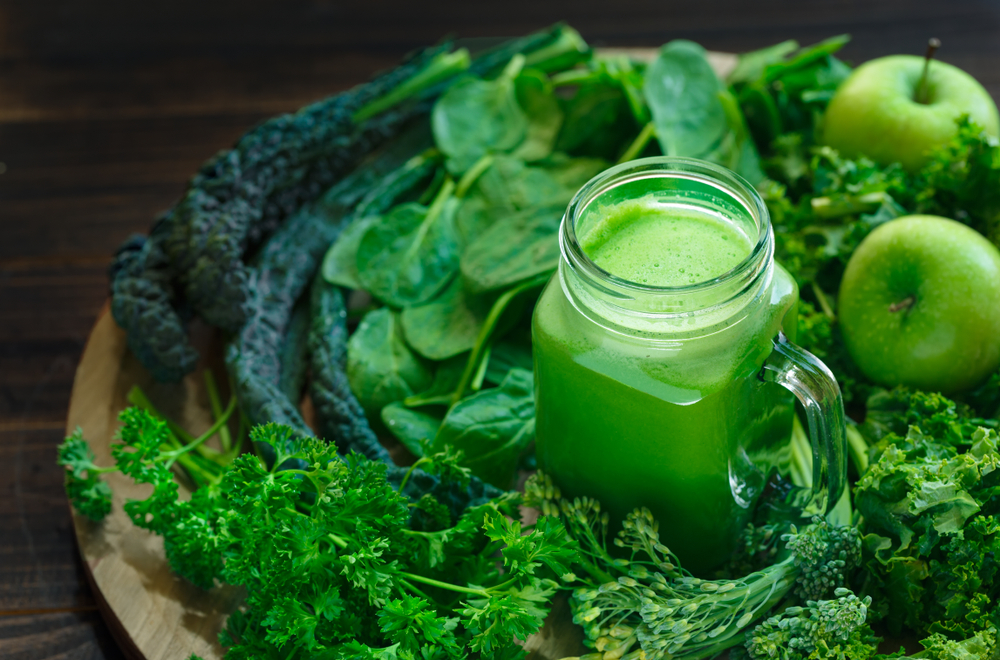
There’s no denying that a balanced diet is essential for health and vitality. Good food choices give our bodies all the nutrients they need, along with plenty of other important compounds. Today, we’re focusing on the benefits of leafy greens for seniors, as these vegetables are powerful and are far too easily overlooked.
First things first, leafy greens is a broad term. It simply refers to any vegetable with green leaves that we eat. Lettuce, spinach, kale, cabbage, and Swiss chard some of the classic large-leafed versions. There are also leafy greens with small leaves, like microgreens, beet greens, and turnip greens.
There are plenty of other greens too, including well-known ones and obscure ones. You can easily include a wide variety of them in your diet. Doing so will give you the best balance of nutrients, along with different flavors and textures.
Benefits of Leafy Greens for Seniors
1. They Can Help Improve Cognition
Recent research suggests that daily consumption of leafy greens contributes to improved memory and a slower rate of cognitive decline in seniors. This includes vegetables like spinach, kale and Swiss chard. You can read more details about the study here.
The study in question was part of the Memory and Aging Project. It involved 960 senior participants, none of whom had dementia.
The conclusions were observational, so they don’t prove cause and effect. Even so, the associations were strong. Other studies have highlighted similar effects too, suggesting
The pattern makes sense too. We already know that leafy greens contain many healthy compounds. The idea that they may help with cognition too is another reason for including them regularly.
2. They Contain Many Nutrients

Leafy greens, particularly those with dark green leaves, are well-known for their nutrient density. You may get plenty of vitamin A, vitamin C, folate, iron, potassium, and calcium.
The exact nutrient density varies on the vegetable that you choose. For example, kale contains a large amount of vitamin A, while collard greens are more well-known for their calcium levels instead.
These nutrients are all important for health. They help to decrease the risk of deficiency, which can have many negative impacts. They also mean that your body has everything it needs to protect itself and reduce disease risk.
3. They’re Low In Calories
While we’re talking about the benefits of leafy greens for seniors, we can’t go past the calorie content of these vegetables. As you probably know, leafy greens don’t contain many calories at all. They mostly consist of nutrients, fiber, and water.
This is fantastic for any senior or caregiver who is watching their weight.
This feature makes leafy greens an easy way to increase nutrient intake. You could use them to make a side salad, include them in a smoothie, sauté them, or add them into a meal.
4. They’re Packed With Antioxidants
Nutrients aren’t the only powerful thing about leafy greens. You’re also getting a surprising array of antioxidants with the vegetables too. There are some interesting phytochemicals in here too, including beta-carotene, which is the orange pigment molecule that we normally associate with orange foods.
If you’re looking for beta-carotene specifically, then kale is one of your best choices. But, don’t forget about the other greens either. Each type has its own advantages.
5. Keeps You Regular
Leafy greens are all packed with fiber. Most of that fiber isn’t digested, although the lack of digestion doesn’t make it any less important. In particular, fiber helps food to smoothly move through your intestines, keeping your digestion on track, and helping you to stay regular.
Besides, it’s no secret that a diet rich in fiber has countless advantages. It could help to decrease disease risk and even lead to a longer life.
And, of course, those benefits aren’t just for seniors either. Caregivers will see many of the same advantages from a diet rich in dark leafy greens and other sources of fiber.
6. May Reduce Stress
Folate is one of the nutrients present in a variety of leafy greens. It has been linked to mood improvements, as it can influence your levels of key neurotransmitters. Some of the other nutrients may help as well, like magnesium.
Besides, eating healthy food and staying clear of processed junk has many positive effects throughout your body. You end up with fewer blood sugar spikes and crashes, less oxidative stress, and perhaps an improved immune system. All of those effects can decrease your sense of being stressed, which then has positive effects on other aspects of your health.
7. Helps Balance Blood Sugar Levels
The fiber in leafy greens is important for keeping your blood sugar levels in check. Doing so is always a good thing, as you will often feel more stable and have more consistent energy if that’s the case.
Plus, avoiding such swings is crucial for some health conditions, like diabetes. Leafy greens can be a powerful aspect of diabetic blood sugar management.
Getting Leafy Greens in Your Diet

Leafy greens are one of those ingredients that people know they should eat – but many don’t. They often seem unappetizing and can get boring fast.
Thankfully, there are some great ways to add them into a diet, like the following.
- Smoothies. Smoothies are a great way to add in many nutrients. Green smoothies often rely on leafy greens anyway and there are many variations out there. But, you can also try alternatives like chocolate banana smoothies and throw in a handful or two of leafy greens. The flavor isn’t even noticeable in the final product. If you’re worried about texture, you can cook and then cool the greens first. There are plenty of fantastic blenders (like this one) you can use to prepare smoothies with ease.
- Strong tasting meals. Greens can be easily buried in many different meals, like lasagna and bakes. They’re often entirely unnoticeable. Even when you can see them, they typically cannot be tasted.
- Interesting salads. Salads get boring fast but there are some amazing recipes that make them better. Look for exciting flavors and things that look great on the plate.
- With eggs. Leafy greens taste fantastic in many egg-based dishes, including quiches, frittatas, and omelets.
- Instead of bread. Using a lettuce wrap instead of burger buns is a classic example here. The approach is a great way to cut down your carb and calorie intake too. Spinach leaves can also be used in this way, although it can be more difficult to keep the leaves in place.
You can also look online for recipes and recipe books. You’ll often find authors using greens in creative ways. Even if you don’t follow their recipes precisely, you’re certain to get some inspiration.
I’m sure you know other techniques as well, and we’d love to hear them in the comments.
But, as always, be aware of your family member’s nutritional needs. For example, some seniors may need to keep their sodium or their fat intake low. This will influence the meals that you can make.
Variety is Crucial
It’s tempting to find a few favorite leafy greens and then include them in all your meals. Many people did this when kale became popular as a superfood.
But, leafy greens aren’t all the same. They vary in their nutrient content, their flavor, their antioxidants, and in other factors. The dark leafy greens, for example, tend to be more nutritious. They contain more nutrients and boost your health in ways that cabbage and lettuce don’t.
If you focus on just a few types of leafy greens, then your nutrient intake will be skewed. You’ll get large amounts of some nutrients and perhaps not enough of others.
Times To Be Careful
Important as they might be, leafy greens have their limitations and risks too. This doesn’t mean that you should avoid them, not at all. Most foods are only good for you when you’re eating the right amount. Eating too much can sometimes be as harmful as not getting enough.
Spinach
Spinach mightn’t be as trendy as kale, but it remains a popular health food. It’s often one of the least expensive dark leafy greens out there. Plus, most of us already know how to cook with it.
Still, we need to highlight spinach as we’re talking about the benefits of leafy greens for seniors, as there are some serious limitations with spinach too.
First, spinach is high in oxalates – more so than most other foods. While you can eat oxalates safely enough, high oxalate intake can increase the chance of kidney stones, especially for people who are dehydrated.
Dehydration can be more common, and potentially more serious, in seniors than in younger adults, making kidney stones an area of concern. The oxalates may have other impacts too, like increasing the risk of joint problems and decreasing nutrient absorption.
Spinach is also rich in uric acid, which may lead to purine production. There are some concerns that such foods increase the risk of gout or make symptoms worse, although the evidence is limited.
None of these issues means that you should avoid spinach entirely. However, seniors should talk to their doctor about spinach intake, especially if they are on medication or have an underlying health condition.
Leafy Greens and Blood Thinners
Anyone on a blood thinning medication like warfarin needs to be aware of their vitamin K intake.
This is crucial, as vitamin K can literally change the effectiveness of the medication. For Warfarin, vitamin K decreases your INR, which is a measure of how fast your blood clots. High vitamin K intakes may decrease the effectiveness of Warfarin to the point that it can’t prevent a blood clot.
Because of this, vitamin K can be dangerous for people taking blood thinners.
But, and here’s the important part, the effect doesn’t mean that you should cut vitamin K out of your diet. As we mentioned earlier, vitamin K is an essential vitamin, one that offers important benefits for seniors.
The most important thing is to keep your vitamin K intake consistent. This way medication levels can be adjusted to account for the vitamin K.
One particularly significant issue is Warfarin.
That’s a good general practice anyway. If a senior is on multiple medications, it’s worth talking to their doctor before any major dietary or lifestyle change, even if that change is positive.
Final Thoughts
Leafy greens are important. They’re also just one part of a healthy diet. To eat well, you need a balance of ingredients, including some sources of healthy fats, carbs, and protein. Fish, whole grains, lean meat, legumes, and plenty of vegetables are all worth including regularly.
Talking to the senior’s doctor is crucial too. Diet is highly individualistic and the best way to eat is influenced by a variety of things, including the senior’s health conditions, any medication, their activity level, and sense of taste.
For example, some seniors may need to be on a low sodium diet, while others may need to keep fat intake down. Focusing on soft foods can be important too. Thankfully, there are many soft foods out there and plenty of delicious recipes.


Leave a Reply